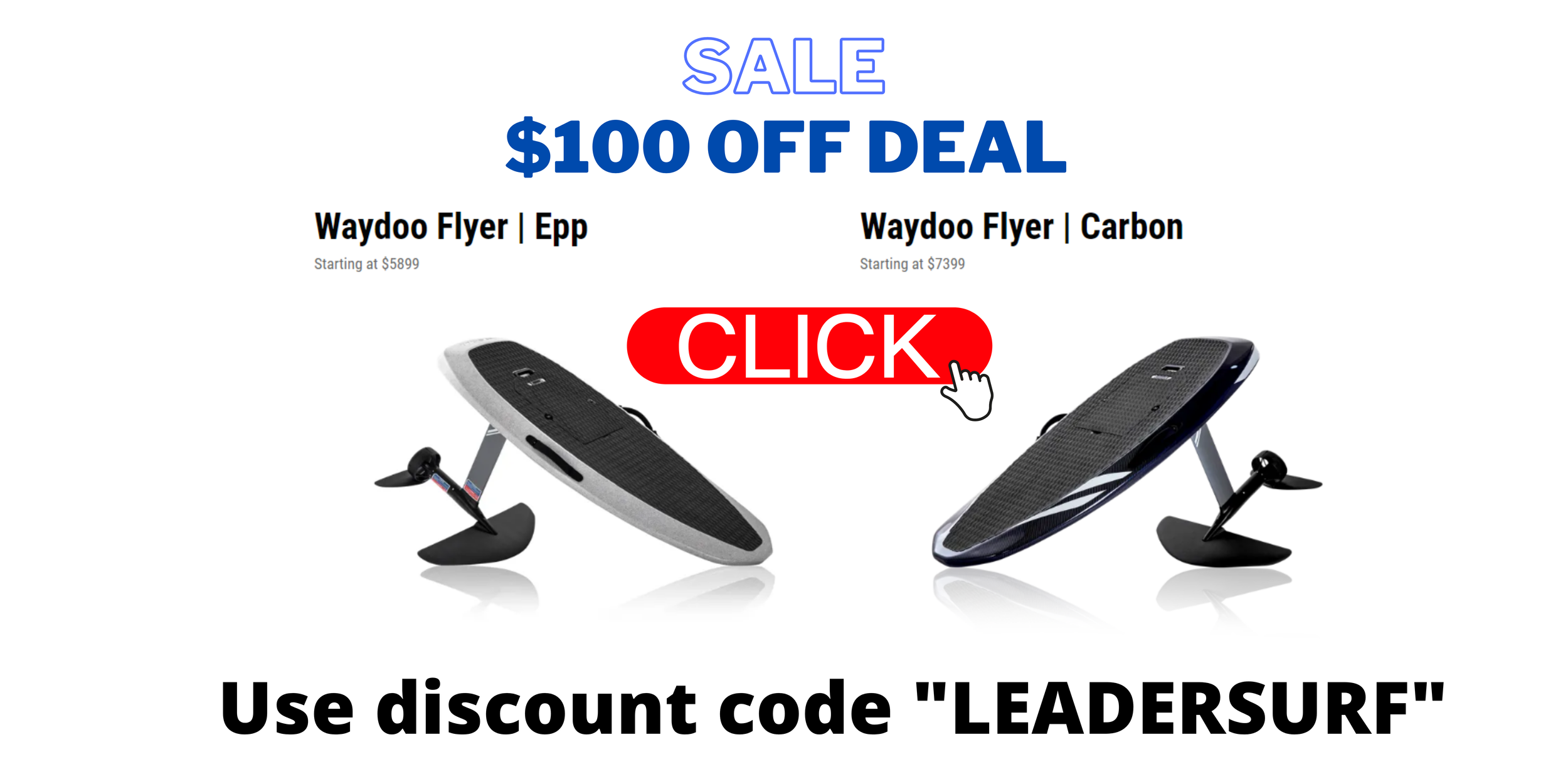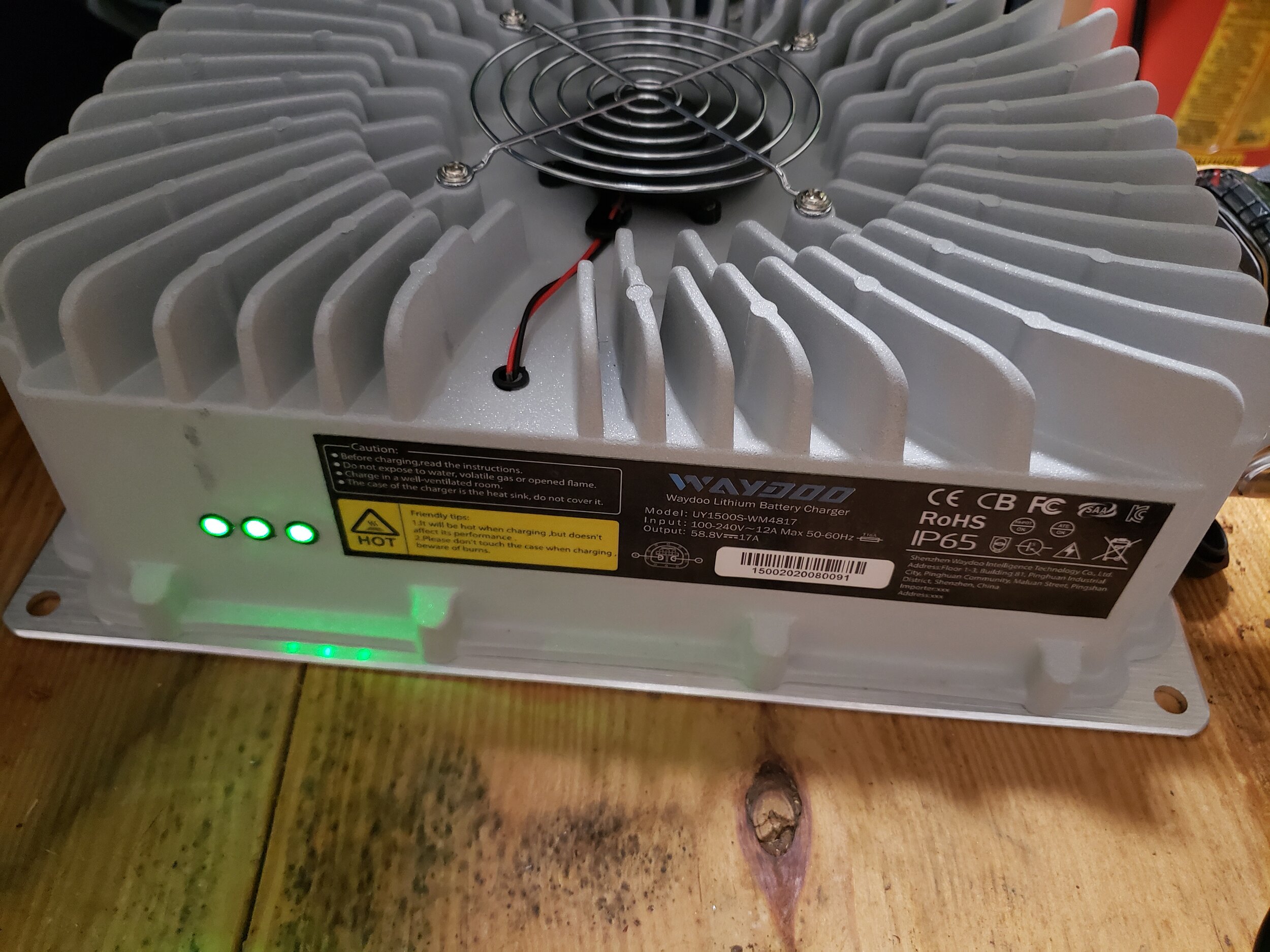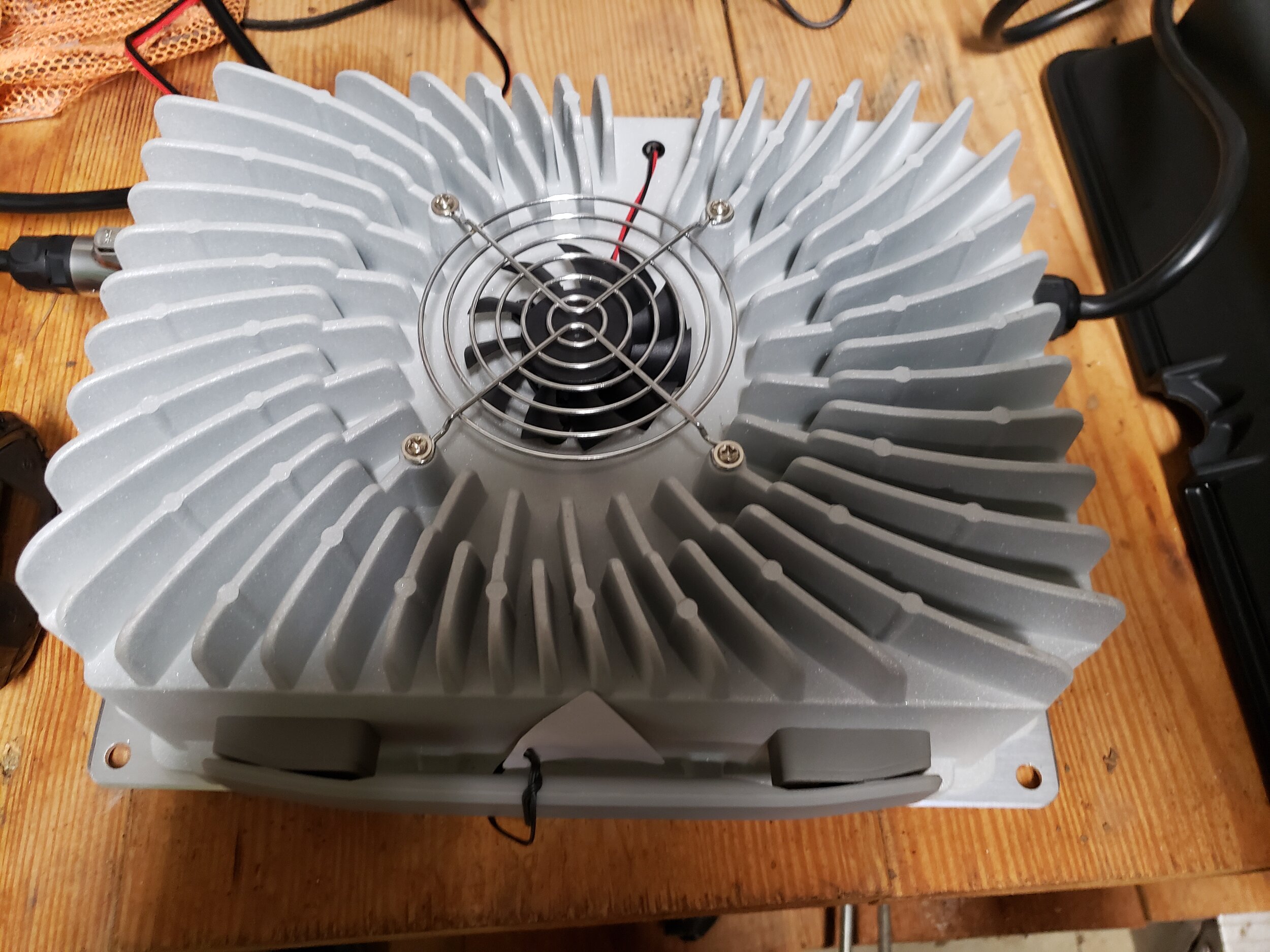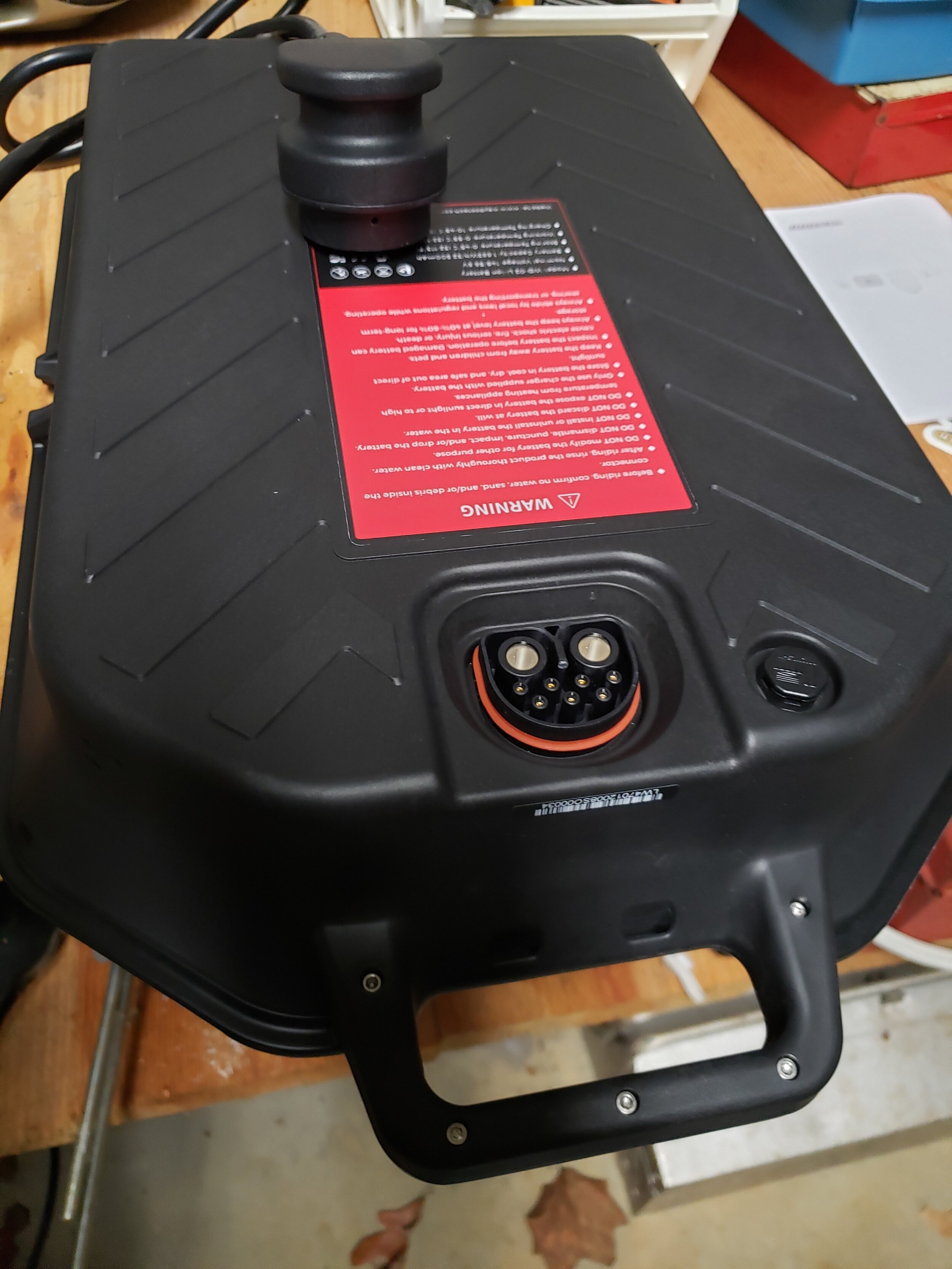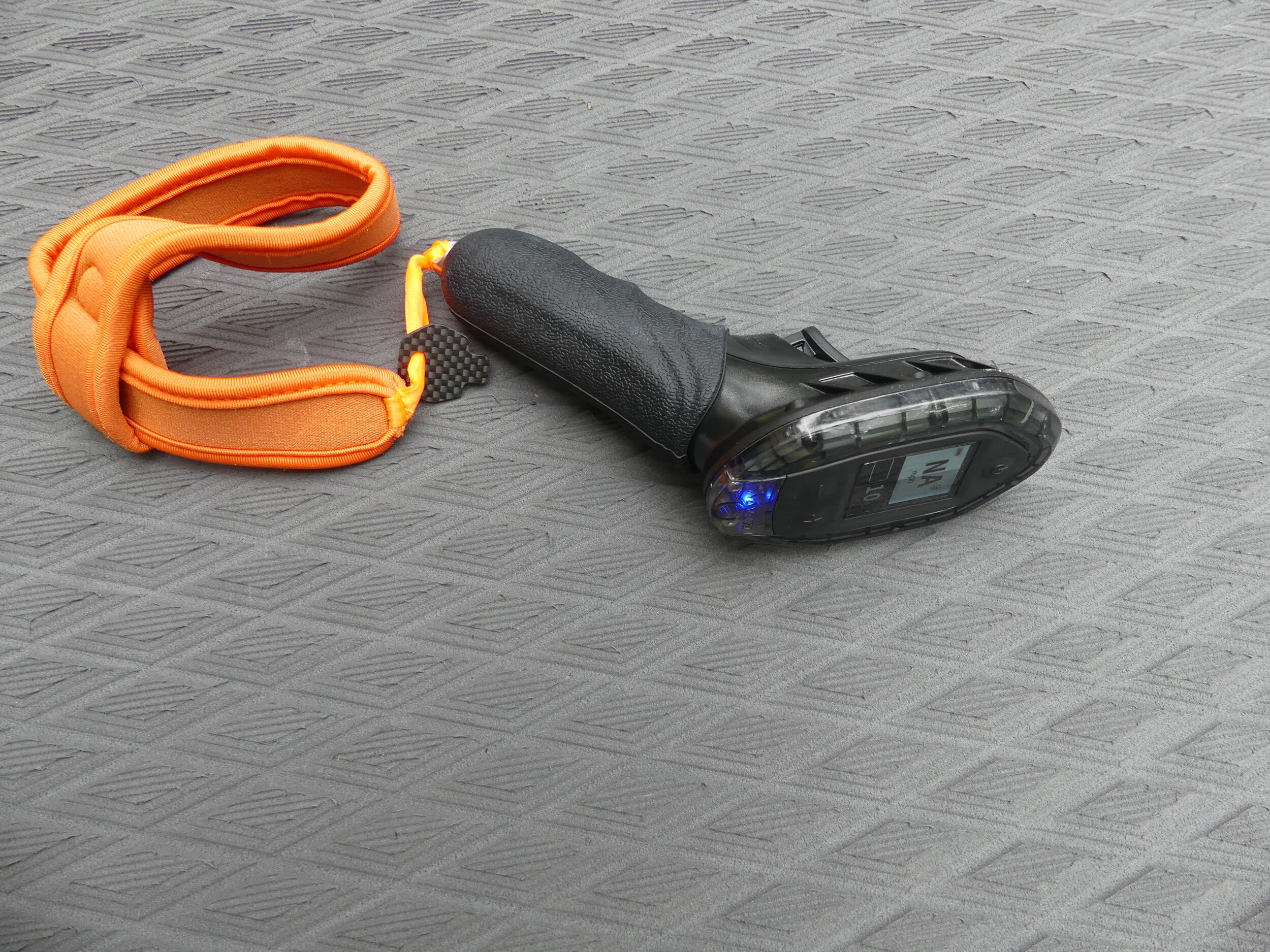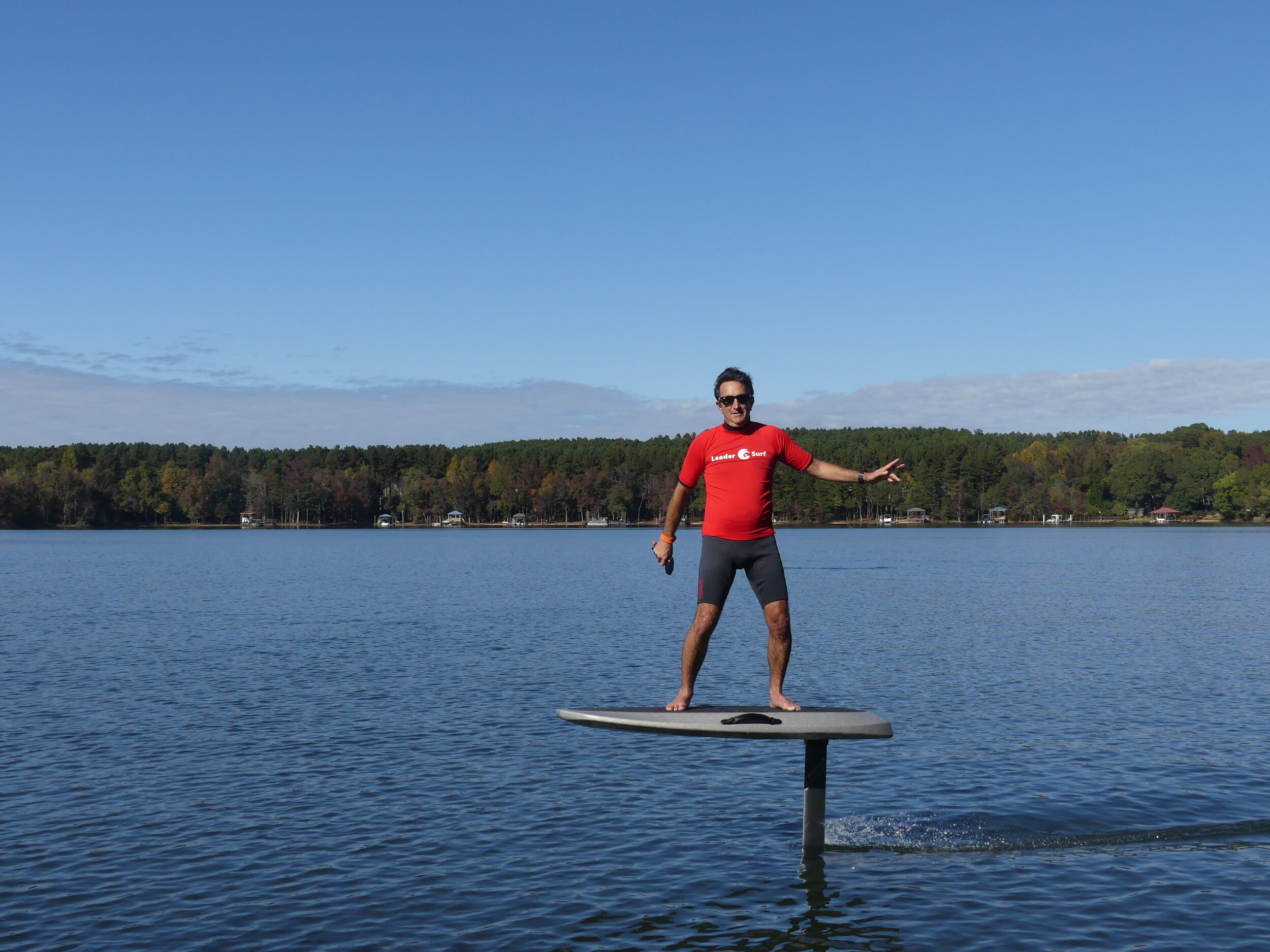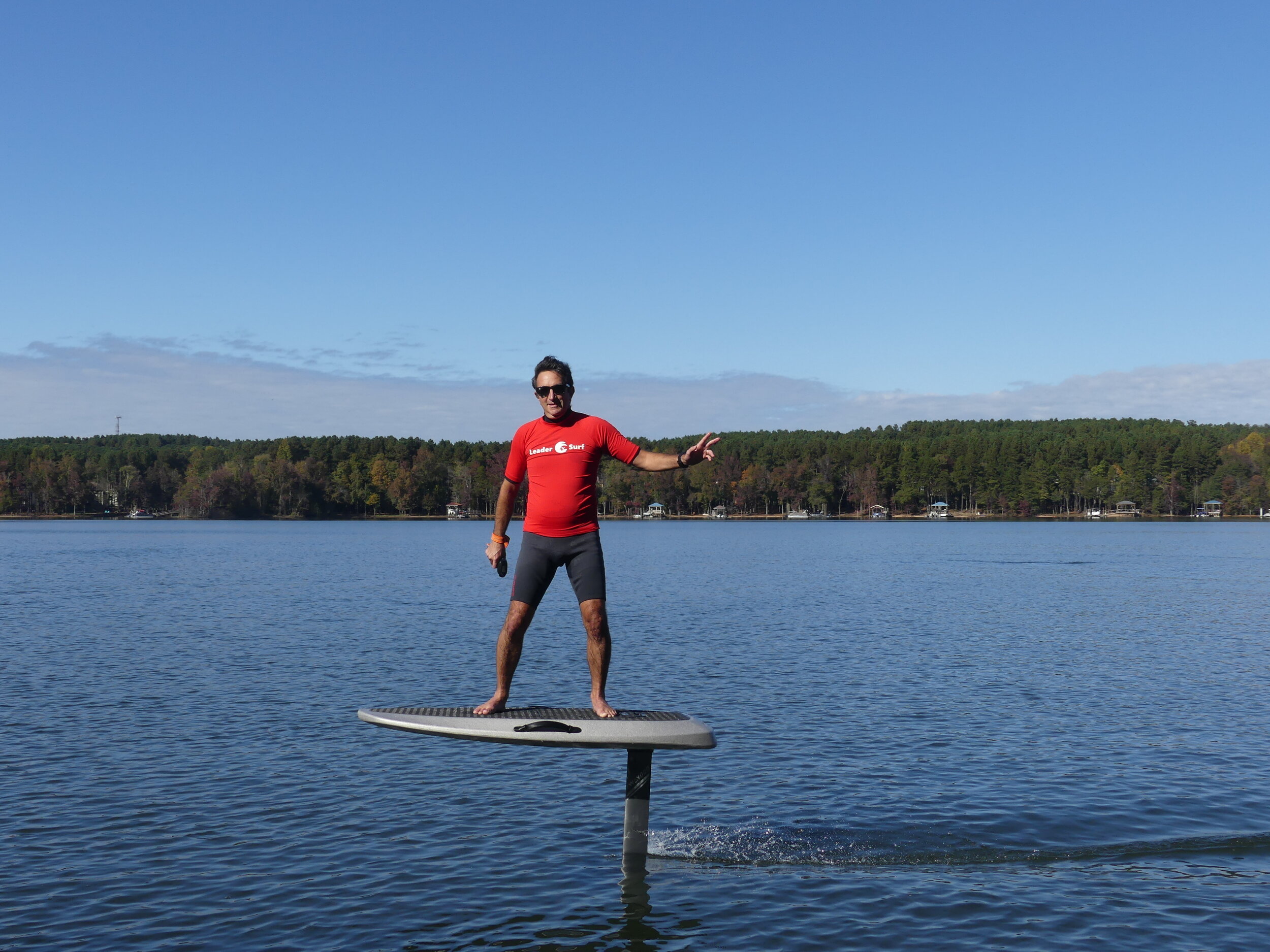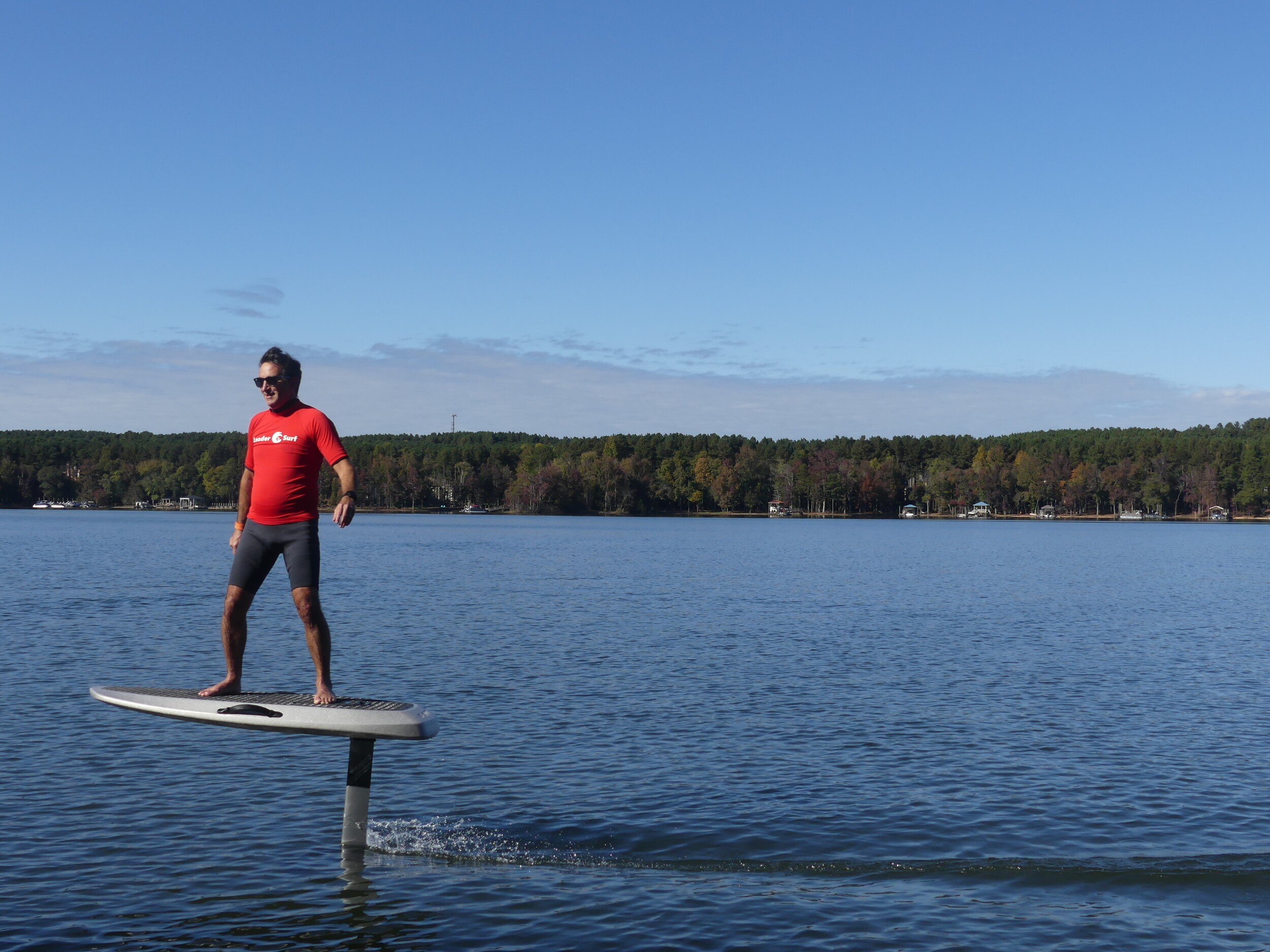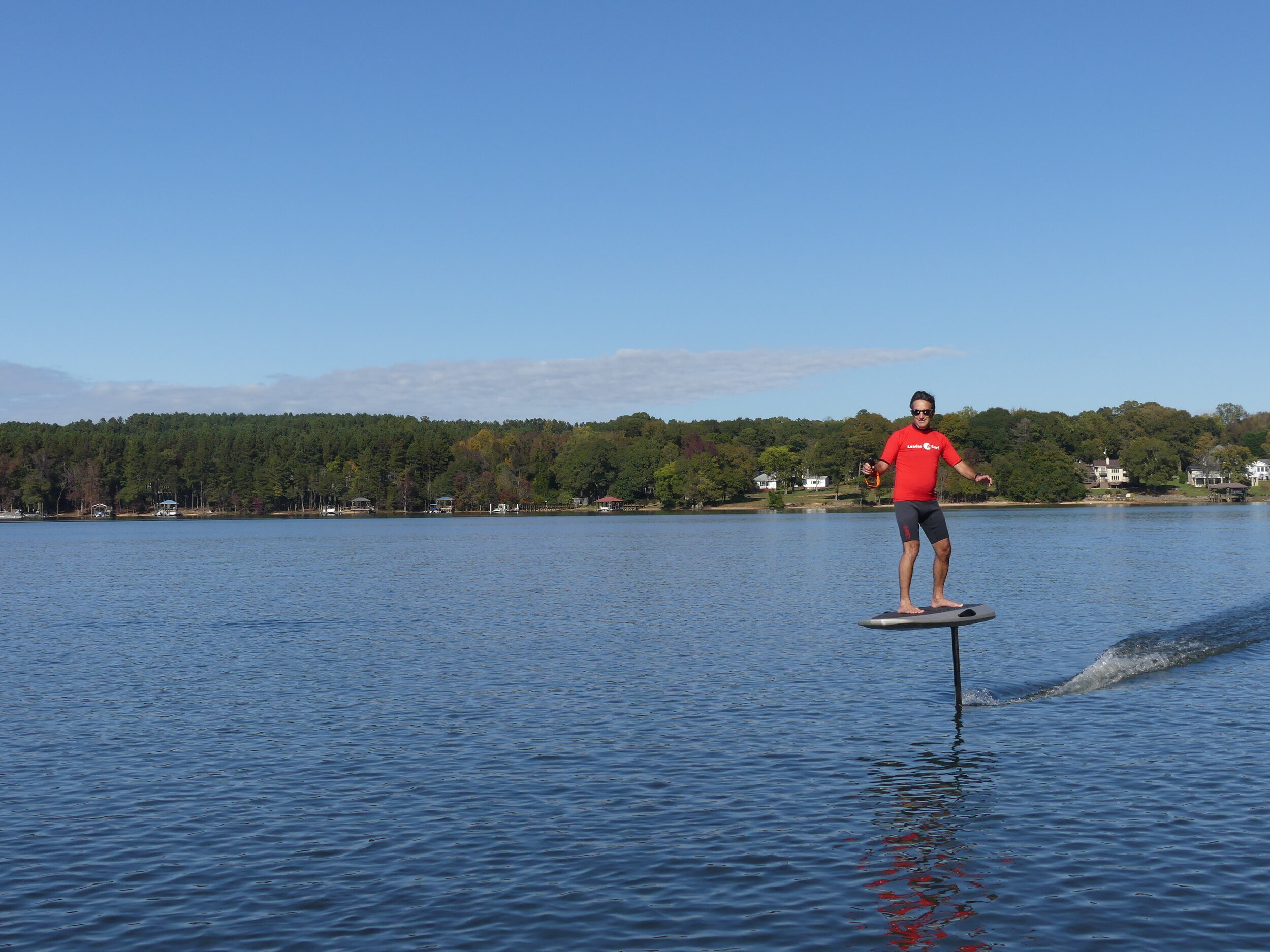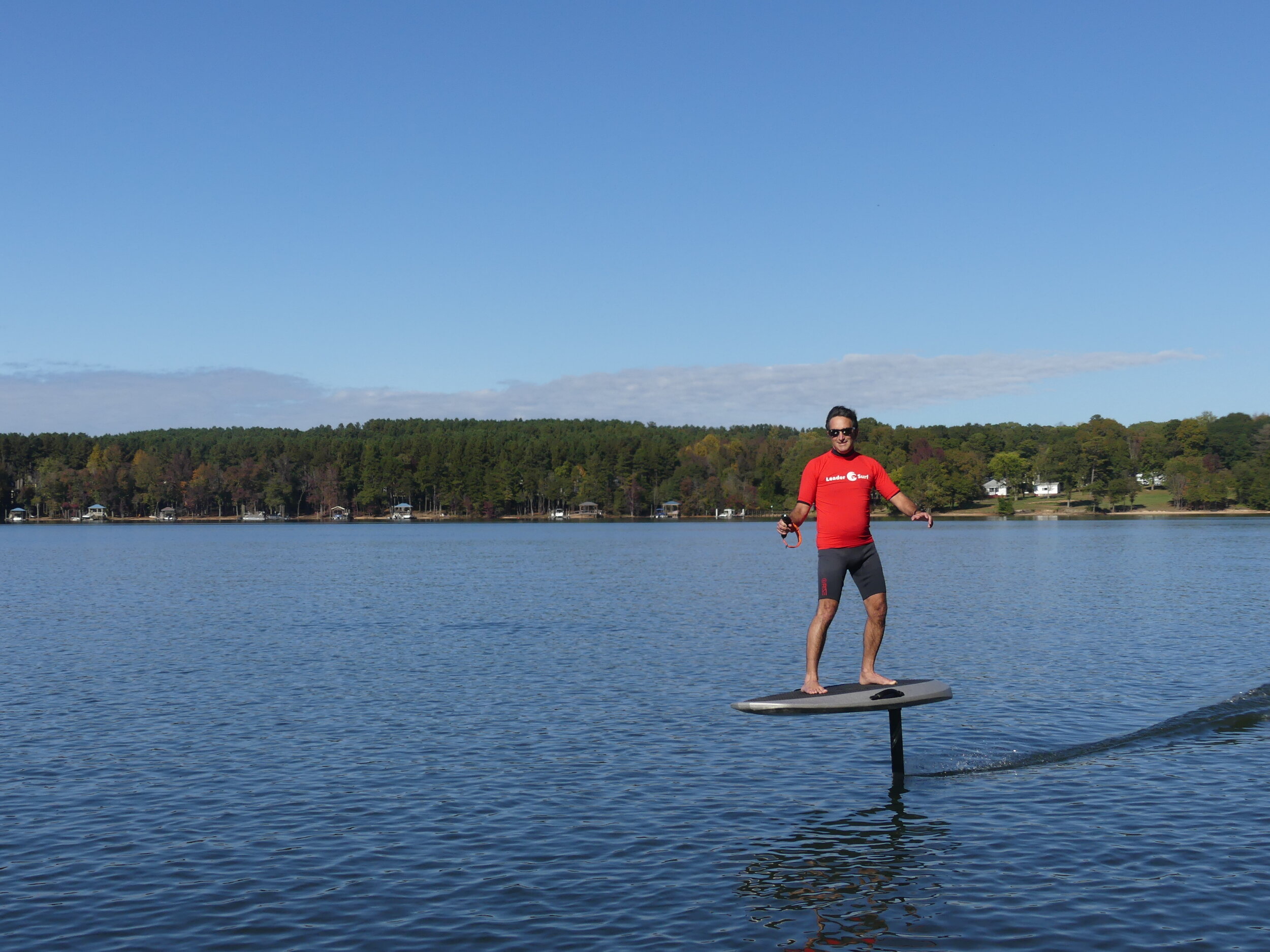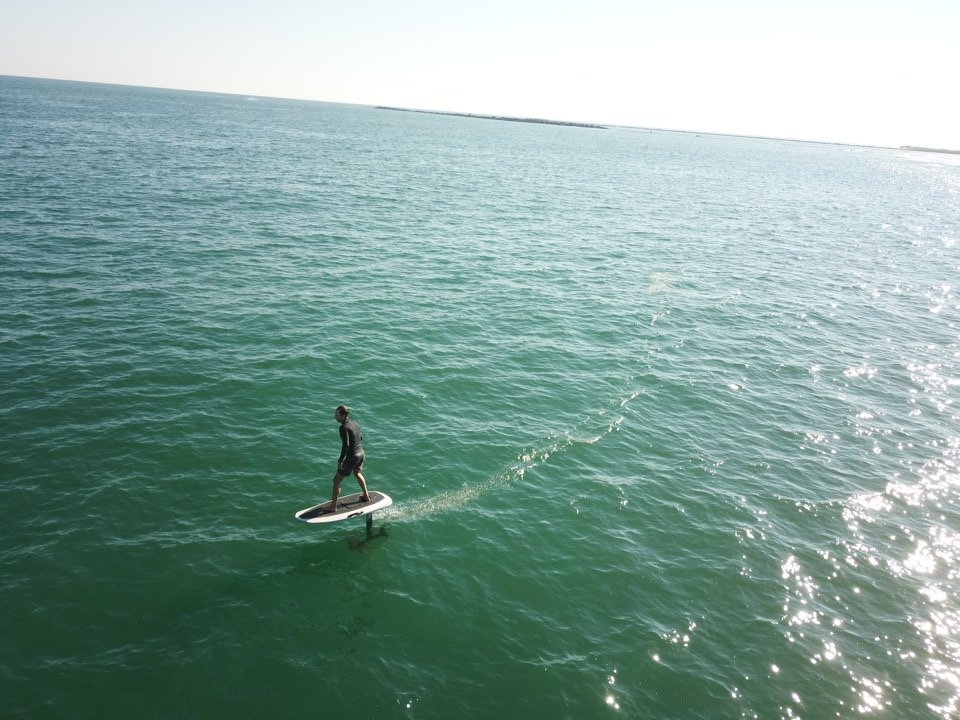Initiate Your First Flight
This review was originally published on October 27, 2020 after receiving my Waydoo Flyer One. Since that time I have logged many hours and seen the experience others have had with Waydoo. The review was updated in July 2021 and again in March 2022.
Image the thrill of flying over the water with only the whirling sound of an electric motor. Welcome to the future courtesy of Waydoo. Electric hydrofoils or Efoils have been around for a few years, but the commercially available boards carried with them prices tags of over $12,000 making them inaccessible to a mass market. Enter Waydoo, a Chinese company that has entered the market with a much more affordably priced option. What follows is my review and impressions of the Waydoo Flyer One Efoil.
This review is atypical of the content that is on this site. LeaderSurf is an experiential leadership development program for business executives. We take experienced executives from around the world to Costa Rica or Nicaragua for a week long leadership development program that includes classroom leadership sessions, executive coaching, a humanitarian aid project and daily surfing lessons. We believe that teaching business leaders to surf, teaches them resilience, self-awareness, vulnerability, grit, determination and skills that enhance overall leadership capability.
As an avid surfer and founder of LeaderSurf, I learned to hydrofoil behind a boat three years ago. It was one of the most challenging new sports for me to learn. After several challenging tries, I finally figured it out and today I am a pretty competent foiler. When I first read about efoils, I was intrigued. The idea of an electric powered hydrofoil that makes no wake, can be ridden on lakes, rivers, oceans or pretty much any other body of water got me very excited until I read about the prices. I followed the developments of Fliteboard and Lift the two main players in the space with the hopes that as they produced boards at greater volumes, that the prices would begin to fall. Thus far that has not been the case.
Waydoo Tech The First Affordable eFoil
Waydoo at CES
In January 2020 I attended the CES (Consumer Electronics Show) in Las Vegas which is the showcase for all new consumer tech. At the show I met the team from Waydoo a Chinese company that was producing an efoil to compete with Lift and Fliteboard. The prototypes looked good, but the representatives were not very well versed in the products. Their poor English and lack of watersports experience gave me pause. I spent several hours at their booth asking questions and inquiring about their growth plans. Everything was quite vague. I attempted to make a deal to purchase one of the boards they had at the show, but it turned into a logistical nightmare with high fees to ship the battery and board from Las Vegas to the east coast, so I ended up passing on the deal. Additionally, I was skeptical of the prototype and post purchase support.
Waydoo Flyer One Kickstarter Teaser
Fast forward to June 16, 2020 and Waydoo announced a Kickstarter campaign for their new Waydoo Flyer One Efoil. Clearly Waydoo had spent the months since CES perfecting their product and preparing a true consumer version for launch. Rather than the $12,000 price point the Waydoo Flyer One was being introduced at an introductory price of $3,799 to $4,099 depending on the version. While still a lot of money for an unproven product and company, I was willing to take the risk. I backed the project and selected the Waydoo Flyer One with the longer mast and smaller wing for $4,099. I was backed #51. I followed the campaign daily watching more people get in on the project and the Waydoo team clear goals and stretch goals. Clearly there was interest and demand for an affordable efoil. When the Kickstarter campaign ended Waydoo had 502 backers who had pledged $2,357,029. This was an extremely successful campaign. Next came the waiting game. The original timeline expected the first boards to ship in August 2020. Covid-19 and other unforeseen issues pushed shipping back. The first boards were not delivered to backers until late September. My board finally arrived on October 20th.
The Unboxing Experience
The board arrived extremely well packed in a large corregated Waydoo Flyer box with their logo tape and custom built foal inserts. I was very impressed with the packaging. Inside the box was the battery pack encased in foam, the early backer stretch goal gifts which included a Waydoo massager, a drybag and a Waydoo logo poncho, and most importantly two protective carry cases. One that contained the board and the other containing the mast, wings, remote, charger, and other accessories. The package was very well designed and of good quality. I was impressed to see that the package included two sets of screws for the front and rear wings, two sets of screws to mount the mast, an allen wrench for mounting and two extra o-rings for the board to battery connection. The remote was packaged in a nice little bag with the leash already attached.
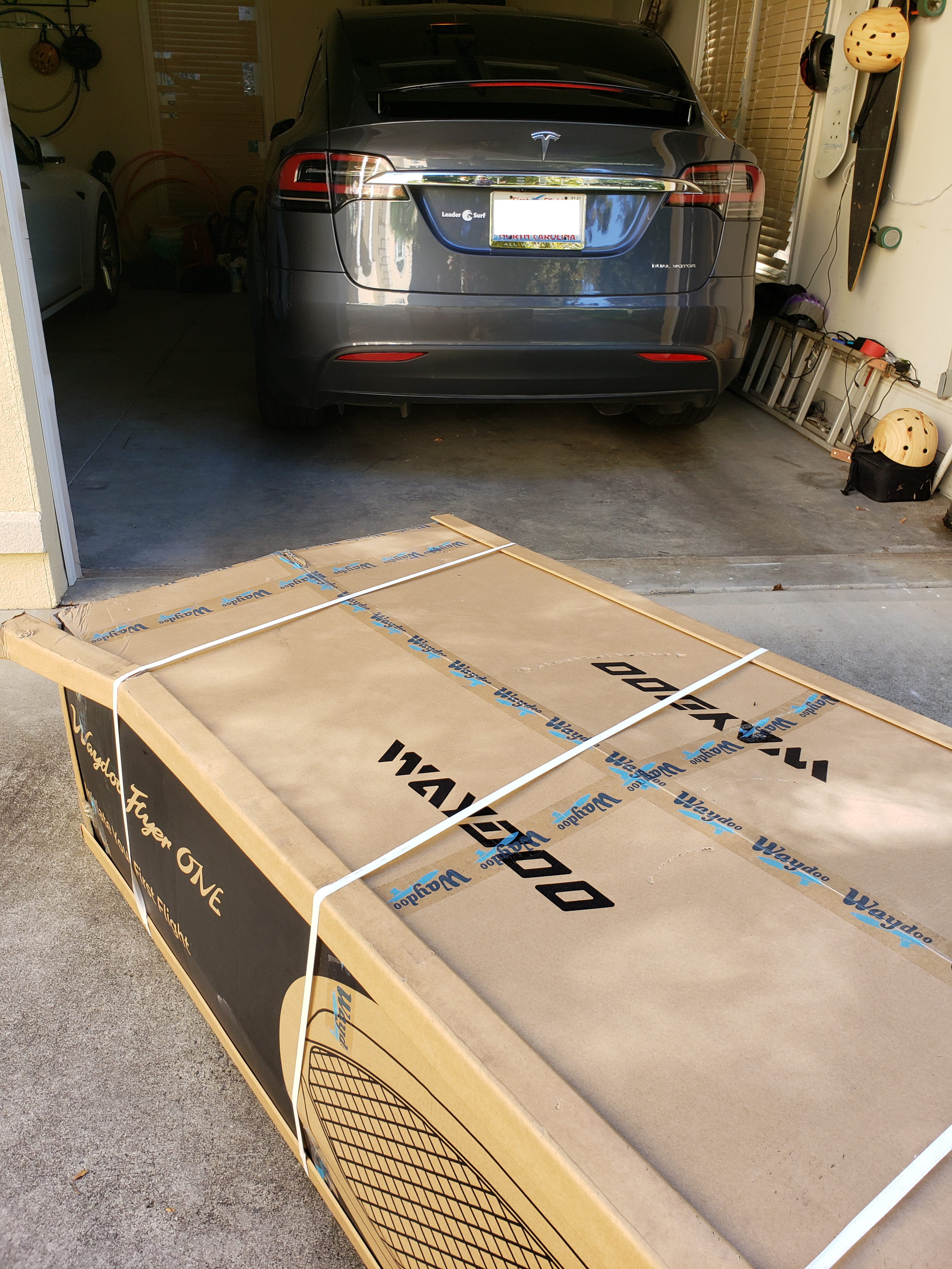
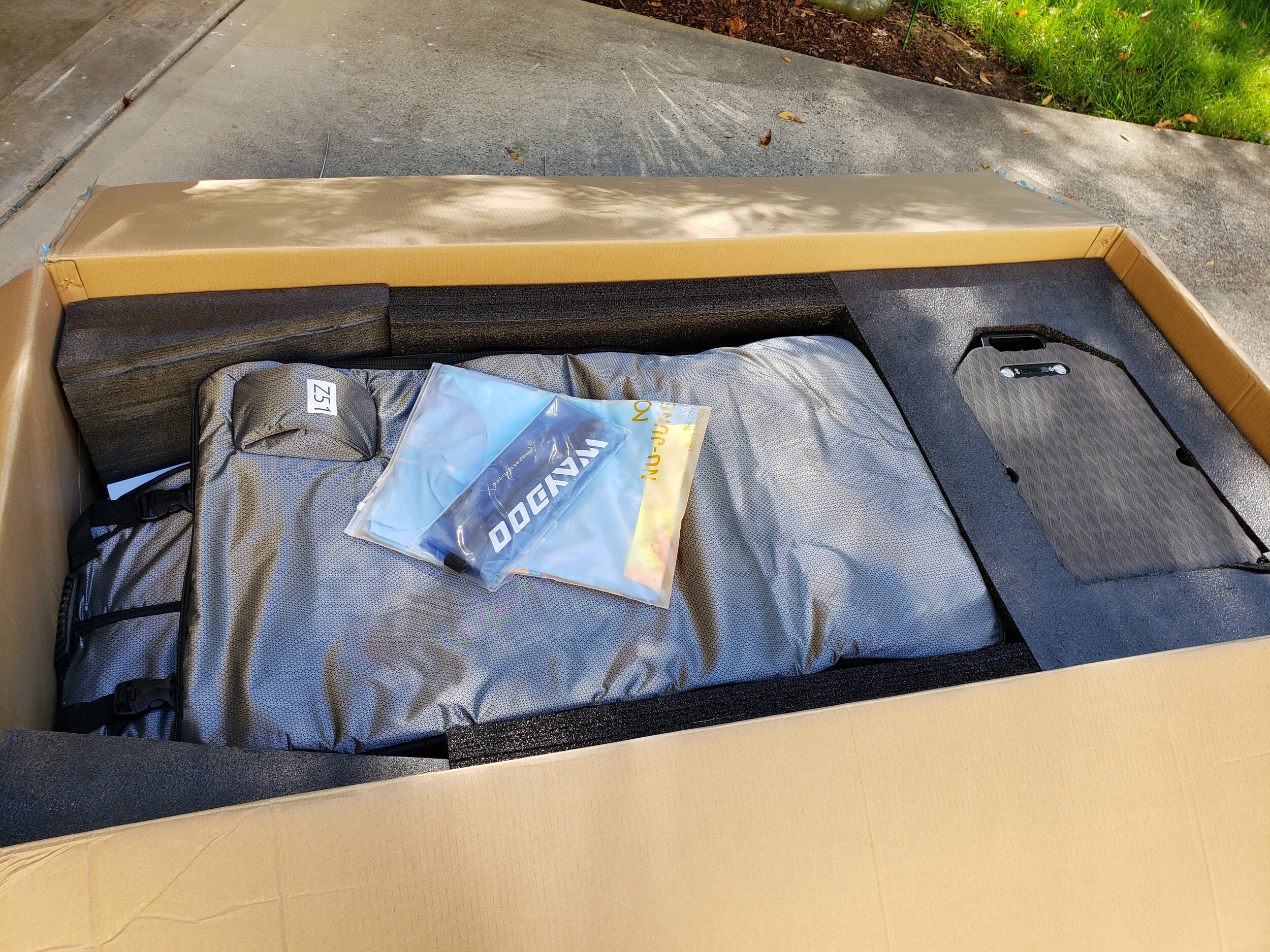
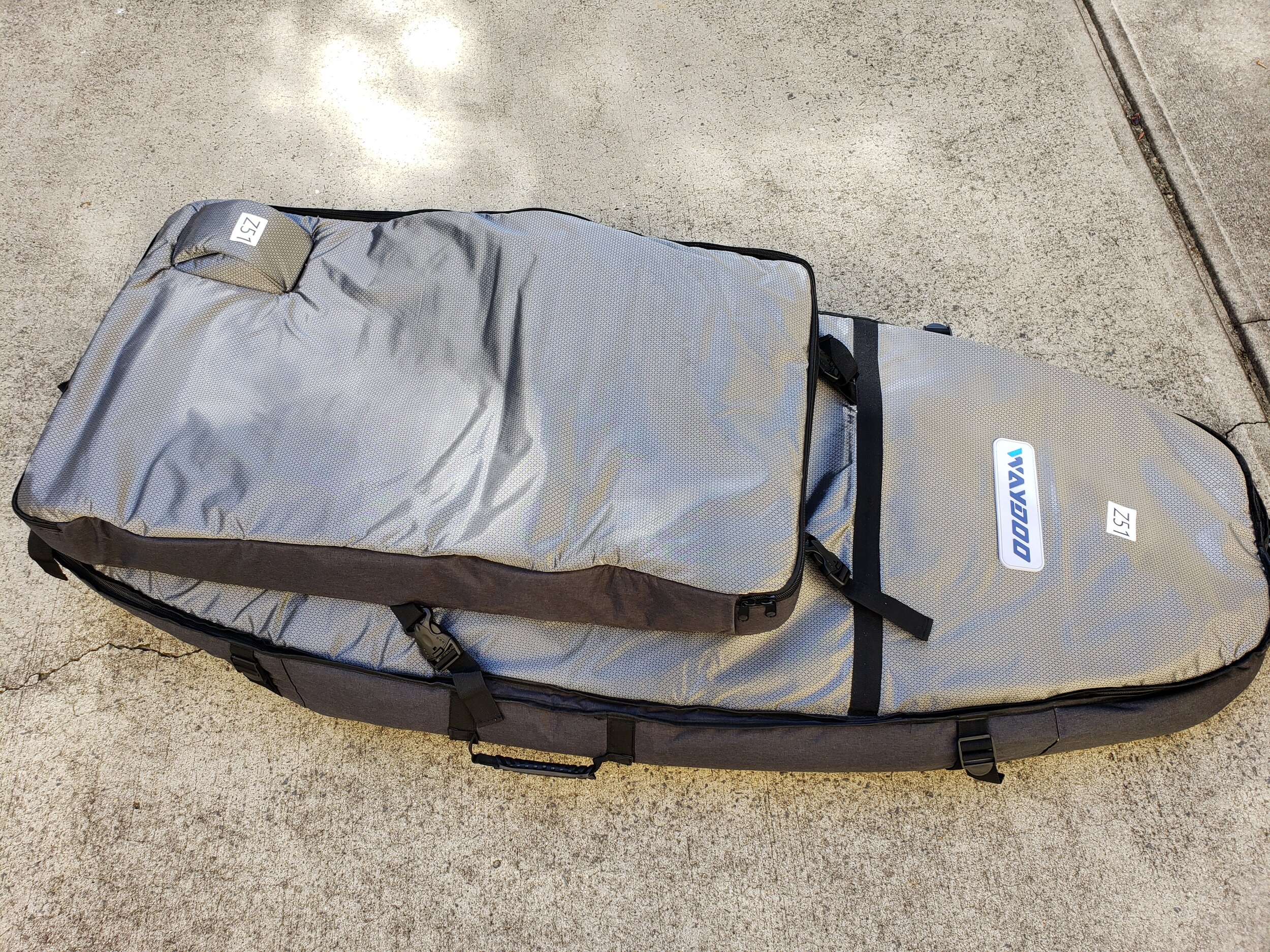
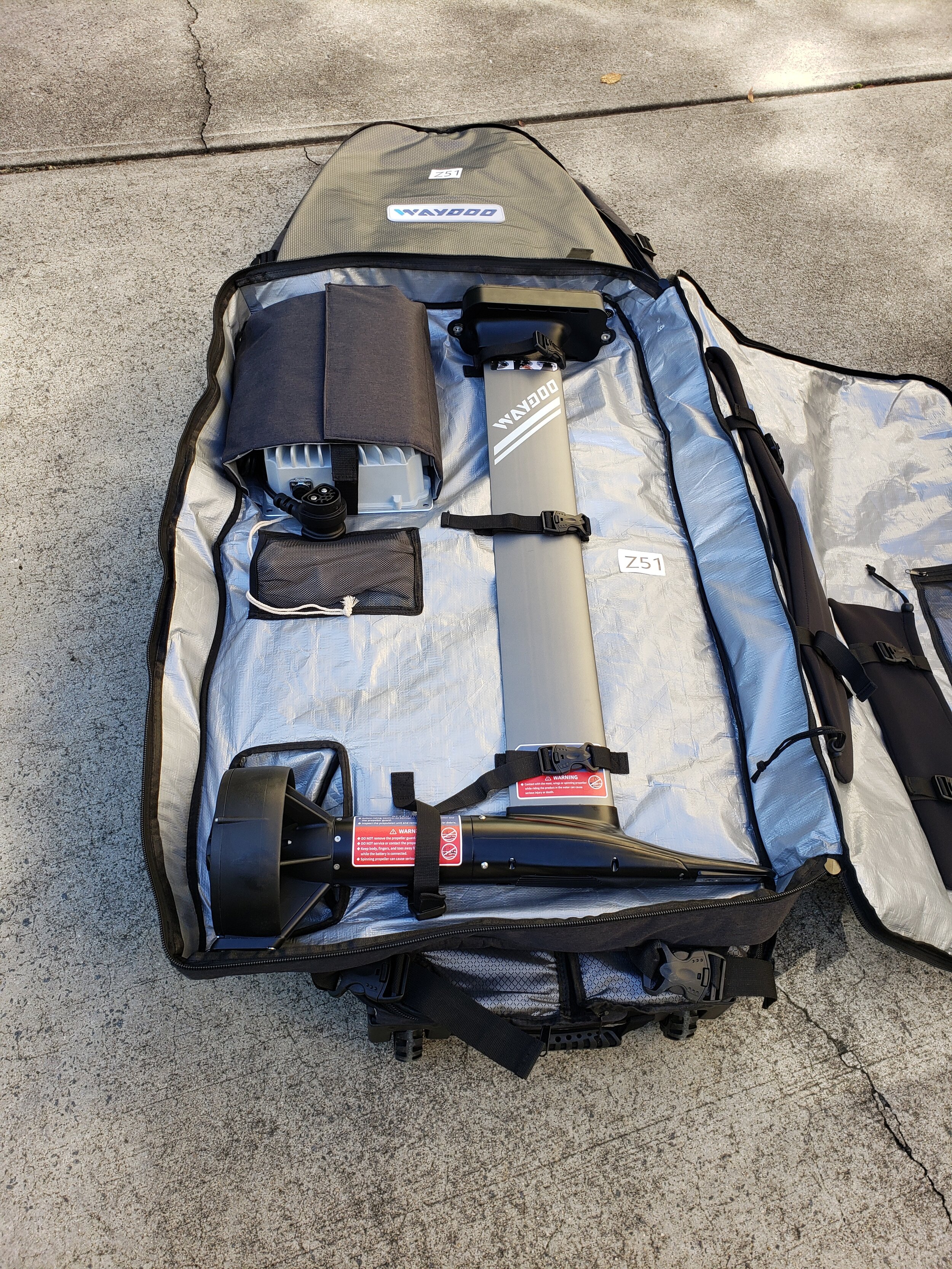
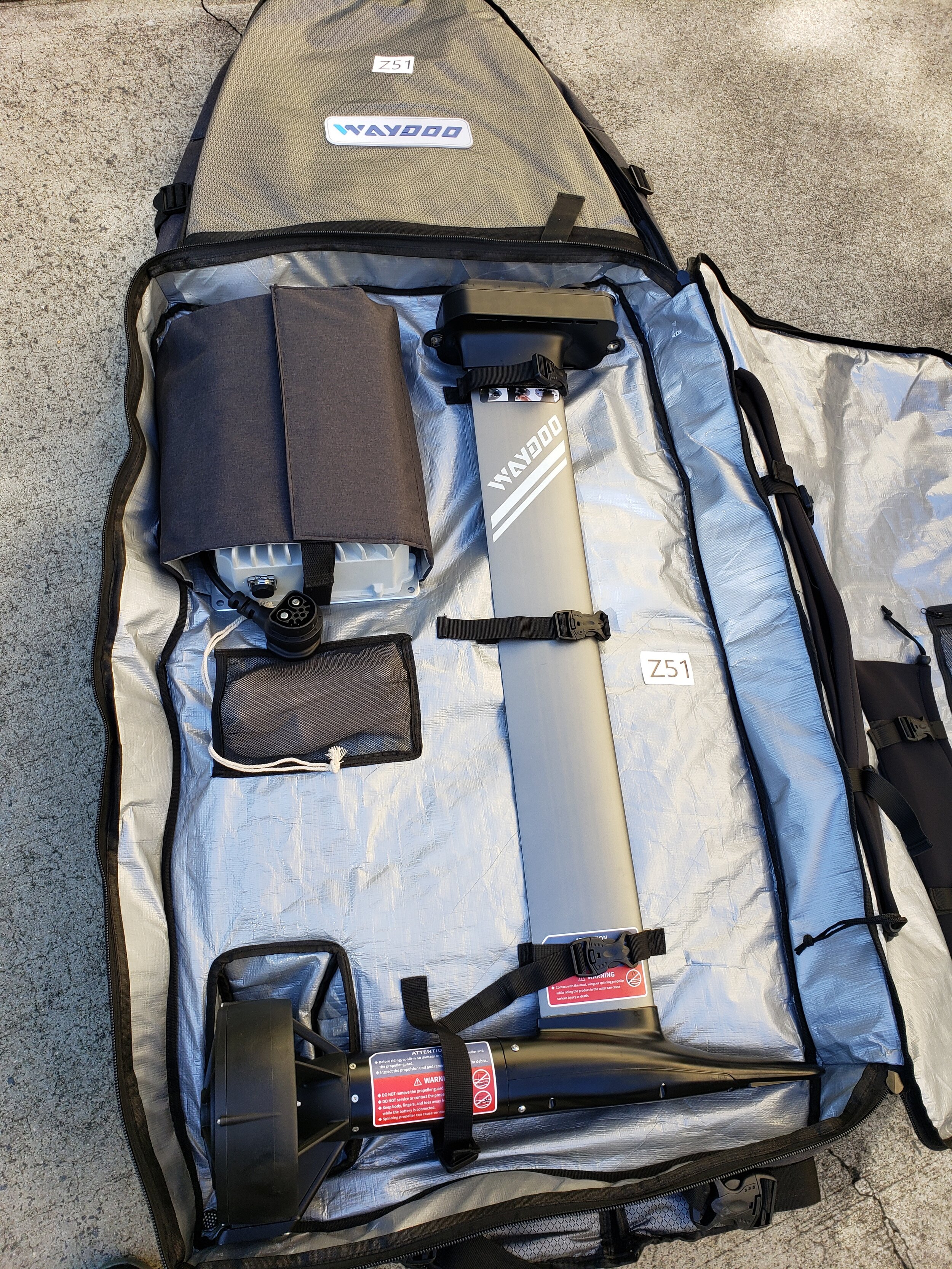
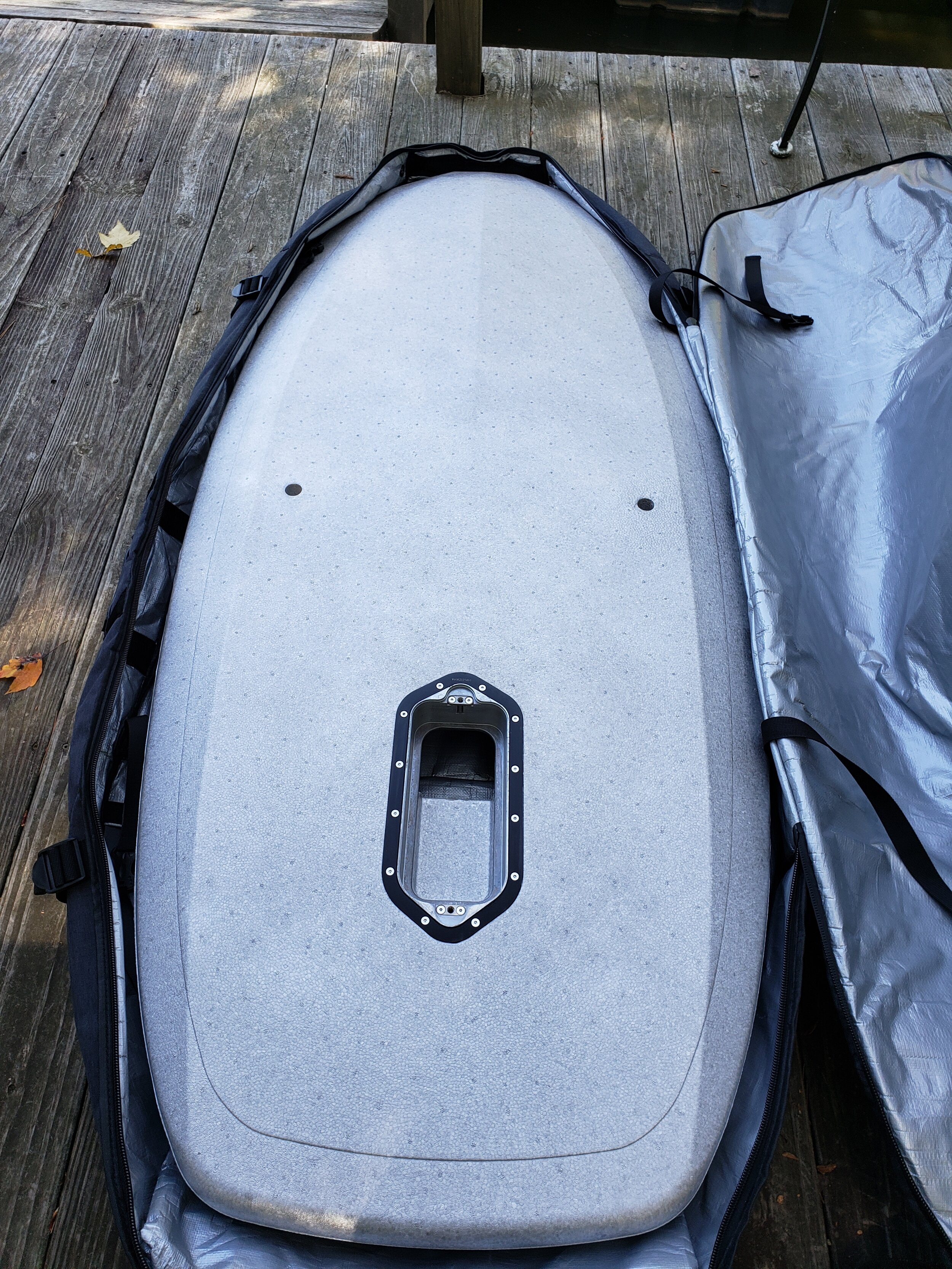

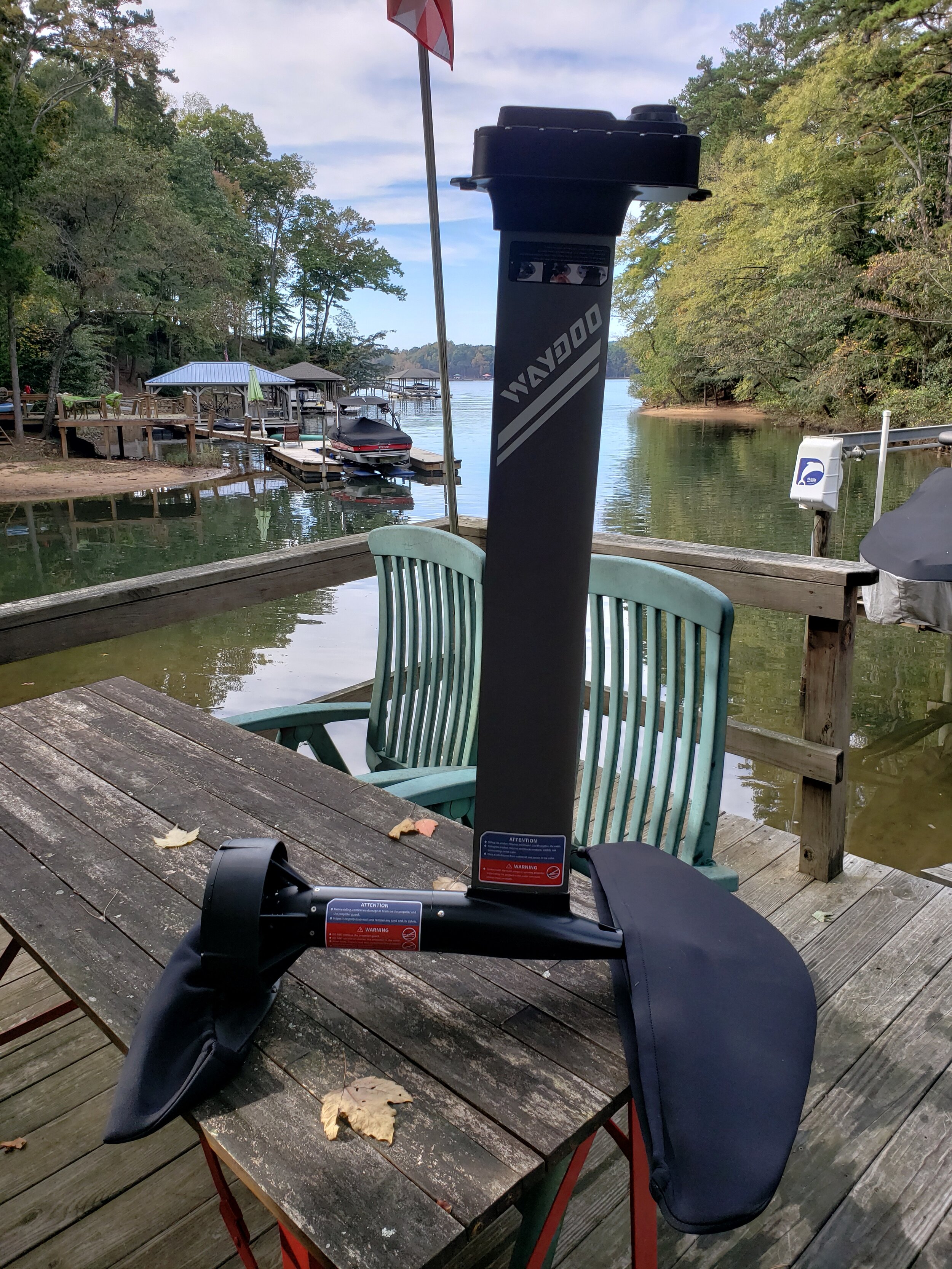
Charging the Battery and Remote
Upon completing the unboxing I immediately plugged in the battery charger to begin the charge cycle for the main battery. The charger is a hulky block with a fan on the top. My charger is the USA version with a three prong cord for connection to a 110v outlet. The primary connector reminds me of a Tesla plug and connects from the battery charger to the battery itself. Once connected, I pushed the power button on the battery which initiated the connection to the charger. The charger blinks blue lights as it begins communicated followed by flashing green as it charges the battery. The battery was probably shipped at about 50% charge state. After a little over one hour the charger light stopped flashing green and turned blue for standby state. This let me know the battery was fully charged.
At the same time I was charging the main battery, I also charged the remote. The remote is a well designed trigger remote with an LCD screen. The remote is waterproof and floats. The remote is charged by an included USB cable that attaches via a magnet connection much like Apple’s Magsafe charger for laptops. There is not an included charging brick, just the proprietary charge cable. Once plugged into a charging brick and into an outlet the remote lit up while charging and changed color once complete.
Assembling the Mast and Wings
Waydoo offered two mast sizes and two wing sizes. I chose the longer mast which is 31.5” long versus the shorter mast which is 25.6”. As an experienced foiler, I had started on a shorter mast, but as I progressed I moved to a longer one, so with the Waydoo I ordered the longer mast. As for the wings, they have a large front wing (explorer) and a smaller front wing (patroller). I ordered the patroller wing as it is more maneuverable and as an experienced rider I was less concerned with lift and stability versus maneuverability. To assemble the mast and wings, I connected the front wing to the mast using the longer included bolts. I wrapped the bolts in teflon tape before screwing them in. I tightened using the included allen wrench. I then connected the rear wing using the same approach once again using teflon tape on the bolts. The front wing is well made out of carbon fiber, the rear wing appears to be some kind of plastic composite. Included in the kit are two neoprene covers, one for each of the wings which offer protection. Fortunately for me I lived on the water, so I can store my mast/wing combo assembled. I would be concerned about the bolts and threads over time if I had to break it down after each use.
The Board
Waydoo’s goal to produce an affordable efoil required that they think creatively about the product to keep the cost down. The board is a great example of where Waydoo saved money through an innovative and practical solution. The Waydoo Flyer One board is made out of EPP foam. EPP is a closed sell foam that is very durable and impact resistant. My original Morey Boogie Mach 7-7 (1984), boogie board which is 36 years old is made from similar material. The material offers several benefits over carbon fiber, fiberglass or epoxy. The two major benefits are cost and durability. The EPP foam board is soft which makes it less fragile when bumping into docks, boats or people. When a new rider is learning to efoil, they will definitely hit the board and the soft EPP foam is much more forgiving than a hard shell board. The Waydoo Flyer One board has an aluminum reinforced frame under the foam outshell which provides the necessary rigidity. The board has two handles, one on either side to aid riders when getting up and to make it easier to carry the board. The deck has a SeaDeck like traction pad that is quite grippy. I found it a bit abrasive when getting from prone to ones knees, but it offers good cushion and traction when standing.
The Remote
The Jet One controller is a smart bluetooth controller that syncs with the board. The Jet One is waterproof and it floats. There is a bright orange neoprene leash attached to the remote which includes the carbon fiber key for the battery compartment. The remote has an LCD screen, power button, plus button, minus button and trigger. The LCD screen is full color although somewhat difficult to read in direct sunlight. The display shows the battery level for the remote which only needs to be charged after every 5 or so uses. The Jet One controller is charged by a USB charger that makes use of a MagSafe like magnetic charger. As mentioned above, the power block for the usb charger is not included. Once paired with the board the LCD screen shows the battery level of the board, speed setting and actual speed which is determined by the built in GPS chip. There are 24 speed levels available. The trigger acts as a throttle of sorts, but the speed is actually controlled by the plus and minus buttons which is a much better system for regulating speed. In the remote menu there are options to switch between Kilometers and Miles and well as to change languages. The remote can also be put in beginner, medium and advanced modes that will limit the top speed. The remote has a FlightFreeze safety function that will lock the propeller when the rider falls off the board. As an additional safety measure the rider must hold down the minus button to unlock the remote before each use, after a fall and after a 10 second timeout.
The PowerFlight Battery Cell
The board is powered by a 32,500 mAH / 1,683 WH Li-Ion battery pack. The battery can power the board for between 50-80 minutes of use. The battery pack is quite heavy at 26.5 lbs. There are two buttons on the battery, a power button and a link button to link the bluetooth remote. My battery was already factory paired with the remote. There are blue lights on the battery that show the battery charge level when the battery is turned on. Charging the battery to full charge takes 2 hours max using the included fast charger. The battery charger is a large device that plugs into a standard wall outlet and then into the PowerFlight cell. There is a small fan on top of the charger to keep it cool and the charger automatically goes into standby mode once the battery is fully charged.
Putting it all Together: The Board, the Mast and the Battery
One of the most advanced and innovative features of the Waydoo Flyer One is the way the battery and mast connect. The much more expensive competitive products use an antiquated system of wires and a waterproof housing. Waydoo has created a very clean plug and play solution where the mast mounts to the board via wingnut screws and then the battery creates a watertight seal with the BMS (battery management system) which is at the top of the mast and mounts through the board. This is an ingenious solution that makes the setup truly plug and play. To assemble the efoil, the user mounts the mast to the board using the wingnut screws and then plugs the battery pack into the top of the board making the watertight connection. There are two clips on the top of the board that hold the battery in place. The lanyard for the remote includes a carbon fiber tool for making it easier to turn the clips to lock the battery in place. Having just three component (the board, the battery and the mast/wing) make it very easy to transport and assemble the foil for use.
Riding The Waydoo Flyer One
As an experienced foiler I found the Waydoo Flyer One very easy to get the hang of. I launched from my dock on my knees for the first try. I set the remote at speed 11. I quick rose to my feet and was able to fly the board of the wing. My first fall came when I released the remote trigger expecting at least a little glide. The board stopped immediately launching me off the front. I climbed back on, unlocked the remote as past of the safety protocol and was back up and flying in no time. During my first session I began to get the feel for the most efficient height for flying without breeching. Unlike a non motorized foil where breaching the wing causes a wipeout, with the Waydoo Flyer One it is possible to get the propeller out of the water while still having the wings in the water. This means it is easy to recover from a cavitating propeller. I found myself carving turns and gaining confidence in no time. I definitely felt some leg burn from riding the foil. It uses some muscles that I had not used on the non motorized foil.
For those who have never foiled before or are not very good on a foil, they will find the Waydoo Flyer One easy to learn. I had a friend who has struggled to foil behind the boat try it and he was flying on his first try. Because of the stability of the wing and the fact that the rider controls the speed, the setup is quite forgiving. I believe that anyone with surfing, wakeboarding or other board sport experience can pick up efoiling in a couple of hours time.
The Good Stuff
Build quality seems impressive thus far
Battery to motor connection is ingenious and works well
Carry cases for the board, mast, wing and accessories is very well designed and good quality
Range seems very good. I am getting 60+ minutes of ride time per charge.
My top speed thus far is 18 mph by choice. I believe that the board will achieve the stated 25mph. I just have not tried going that fast yet.
The battery charges in under 2 hours as stated
The long mast and smaller patroller wing provide great stability and maneuverability
The board is durable, light and stable
The price is impressive at retail price of $4,800*
*The retail network is still being set up, so the retailing availability and pricing is still subject to change.
The Not So Good Stuff
The delivery took much longer than expected
The motor is much louder than I expected
Several other Kickstarter backers have had part failures which include:
Bent long mast
Water in the remote
Remote failure
Stripped wing mounts
Waterlogged boards
Motors not achieving specified performance
Broken fuselages
Questions around warranty items, lead time for replacement and ongoing support is very vague
Waydoo is still a start up and this is their first official globally released product. It will take time for the company iron out the quality and support issues. I am very impressed with the Waydoo Flyer One thus far and I have high hopes for Waydoo as they evolve and grow their company and their product offerings. It is my hope that I will get to enjoy several seasons of use out of my Waydoo Flyer One.
IS IT WORTH IT? (Updated March 2022)
Absolutely. With over 400 miles and 60+ rides on my Waydoo Flyer One, I have only had one issue. The Waydoo has been awesome. I have ridden it in the ocean, in bays and on lakes. My board was absorbing water when I left it floating. Because I am an experienced foiler I spent almost all of my time flying rather than in the water. During the summer I have stopped to hang out with friends and as a result of the board just sitting in the water it absorbs water. It has definitely gotten heavier. I logged a warranty claim on June 4, 2021, promptly received an automated email from Waydoo and then waited for over a month before having the claim approved. Waydoo sent me a new board and did not ask for the old board back. I continue to ride the original board.
Waydoo has provided some firmware updates to the remote and the board. I am not clear on the improvements from the updates, but they have gone smoothly. The app while somewhat buggy does provide some useful data and does track rides and battery cycles. Some of the original power units had a week point and Waydoo engineers came up with an ingenious solution with a support brace that was sent to all early purchasers. The brace does not impact performance, but definitely provides additional support. This shows a clear sign that Waydoo is serious about supporting and improving their product.
Recently I had a chance to ride a Lift V3 Ultra and while there are clear advantages such as run time, quieter motor and overall build quality, there are also advantages to the Waydoo. The Waydoo remote shows speed and it is easier to work the trigger and gears on the Waydoo, the foam board is much more durable especially when landing at docks and the plug and play setup with no wires is much better on the Waydoo. This makes it hard to justify the price difference. Waydoo is half the cost of the Lift and offers 90% of the fun.
I love efoiling and I have introduced many others to the sport. Waydoo makes it much more accessible at the price point and they continue to improve the product. I am excited to see what Waydoo releases for their next generation version of the product.
Waydoo has since released a new model the Waydoo EVO. Read our full review here: Waydoo EVO Review



